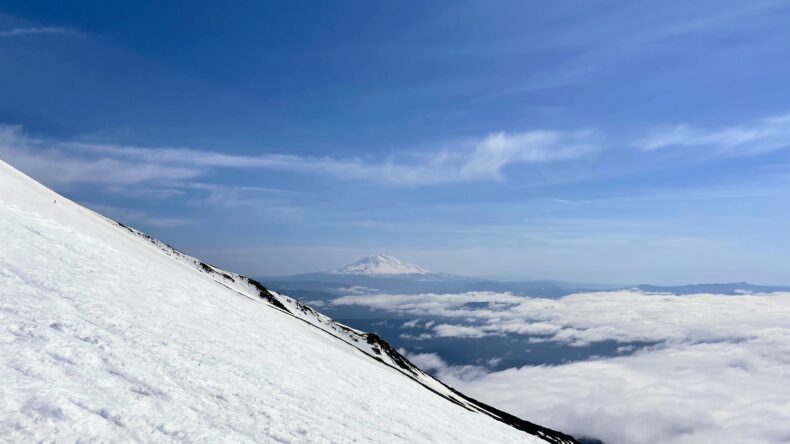
A couple of weeks ago, I climbed Mount Adams with my friend Carson. Our plan had been to climb Mount Hood, but schedules being what they were we could only get away from Friday to Saturday. Weekends on Hood can be pretty crowded, so Mount Adams was something of a fallback. A consolation prize.
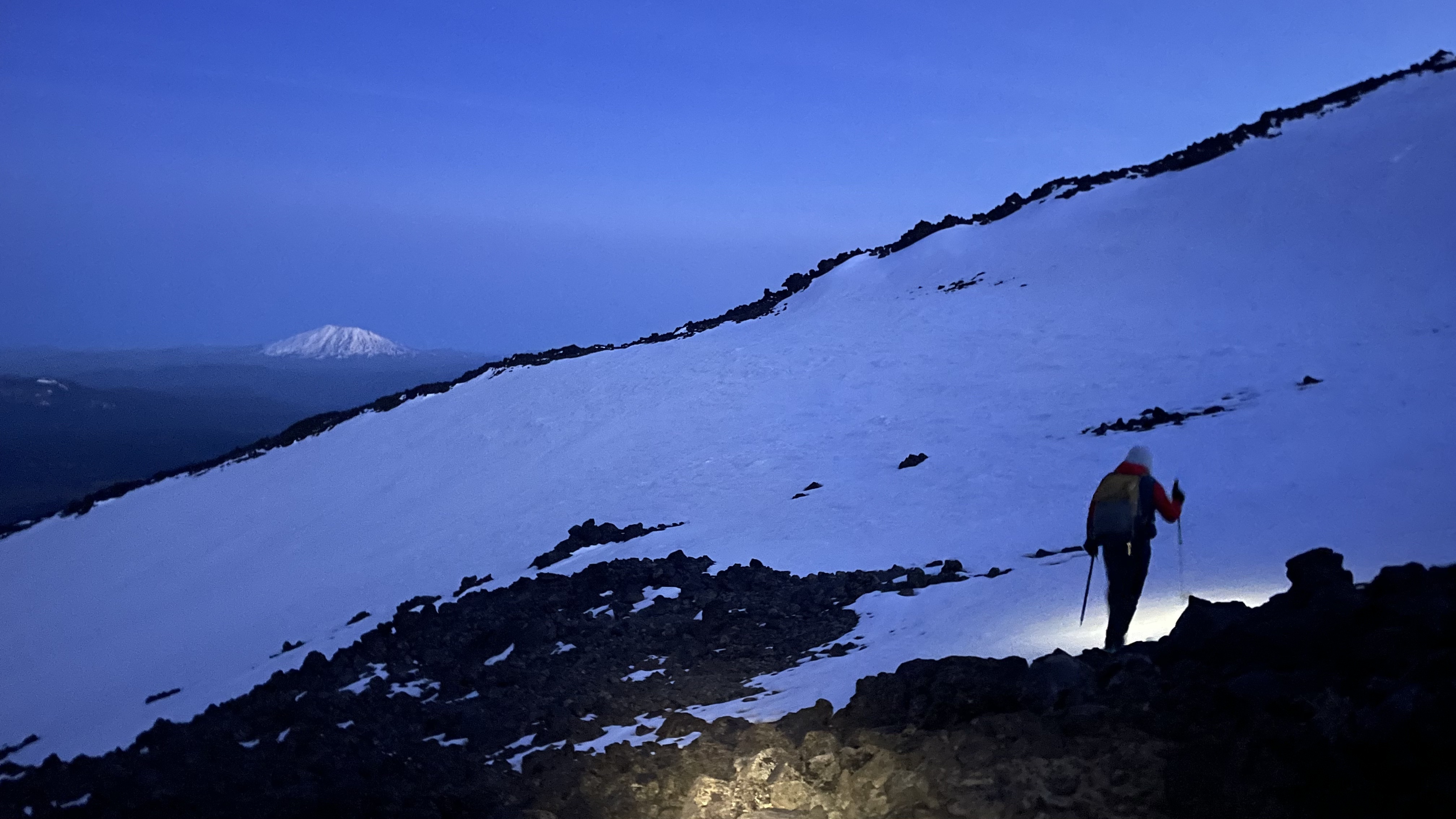
Mount Adams is one of the five major volcanoes in Washington, but is somewhat anonymous as those peaks go. I’ve seen it referred to as “The Forgotten Giant of Washington” or “The Forgotten Volcano.” A curious fate, given the mountain’s immense size. At 12,280 feet in elevation (give or take), with over 8,000 feet of prominence, it is the second-tallest mountain in Washington, after Mount Rainier. With a volume of some seventy cubic miles, it is the second-most massive of the Cascade volcanoes, after Mount Shasta in California. More than a mere bump on the landscape, in other words.
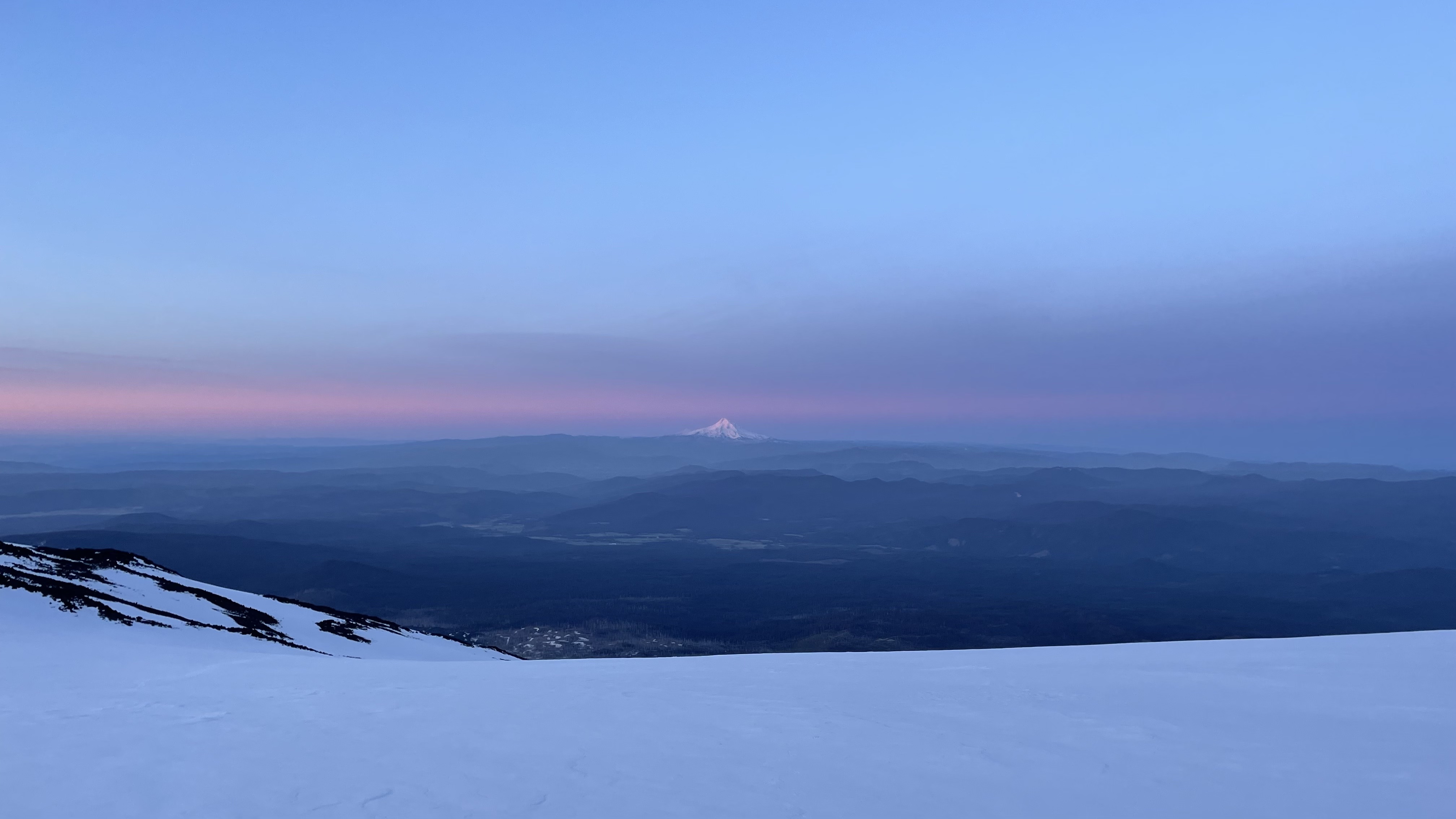
Second in this, second in that. Maybe that has something to do with Mount Adams’ air of understatedness. Even its present-day name in English nods at a penchant to obscurity. George Vancouver may have named Baker, Rainier, St. Helens, and Hood after British gentry during his 1792 expeditions, but somehow he and his survey parties overlooked the tall peak just beyond Rainier and St. Helens, which was eventually named after John Adams. (The second president!) That said, the mountain would have its moments. In 1805, while canoeing down the Columbia River, Lewis and Clark wrote of seeing “a high mountain of emence hight covered with snow.” They supposed it to be “perhaps the highest pinnacle in America.” Good on Adams! Save for the fact that Lewis and Clark thought they were looking at Mount St. Helens.
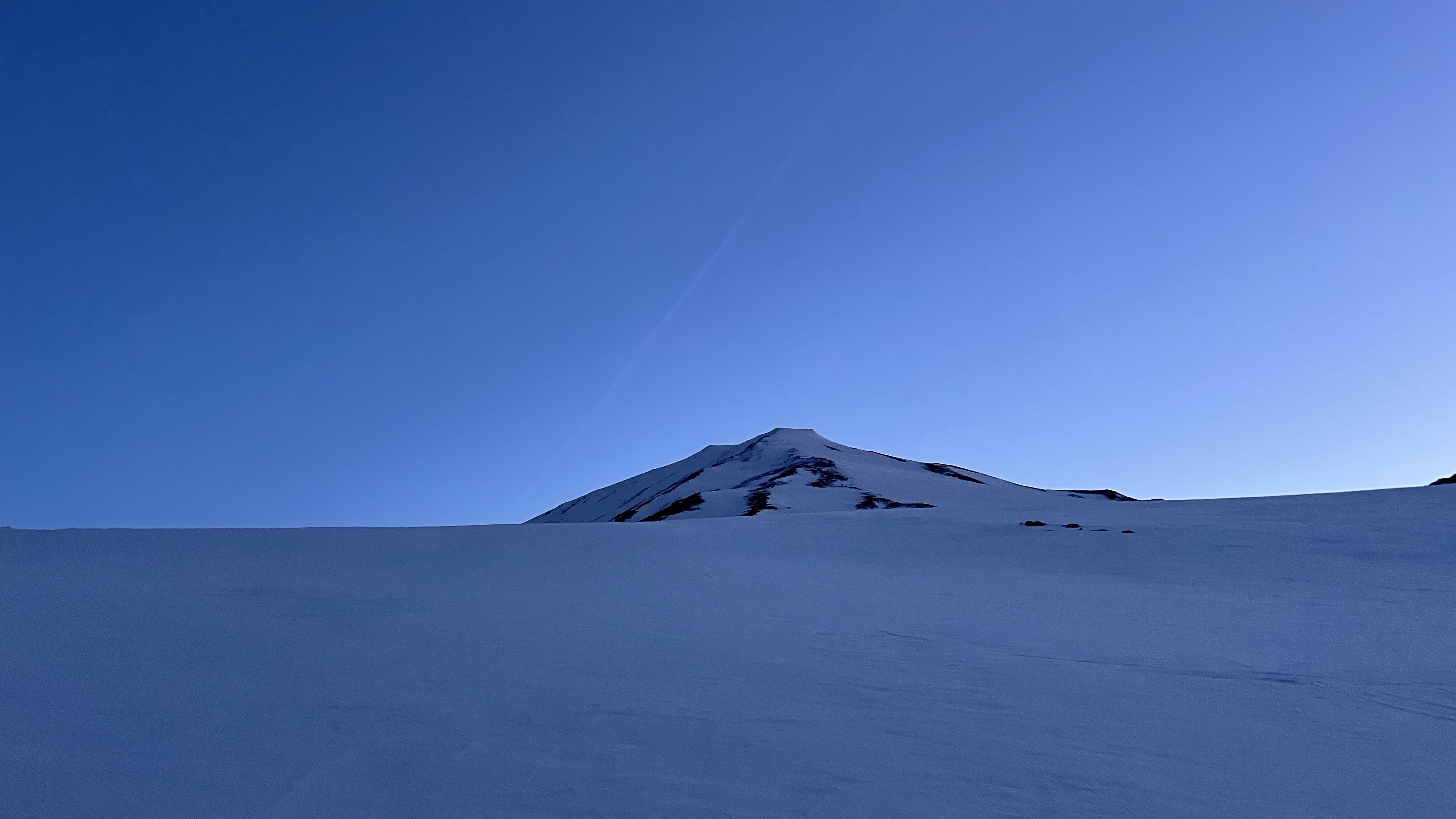
One other thing is Adams is the second-easternmost of the Washington volcanoes (after Glacier Peak), and so when you look at it from the bulk of the Cascade Crest–from Rainier, or St. Helens, or Hood, or the Goat Rocks, or wherever–you are seeing it from the west. To these peaks, Adams shows a stolid profile, with rather rounded upper slopes, like slumped shoulders, below a broad, flat summit.
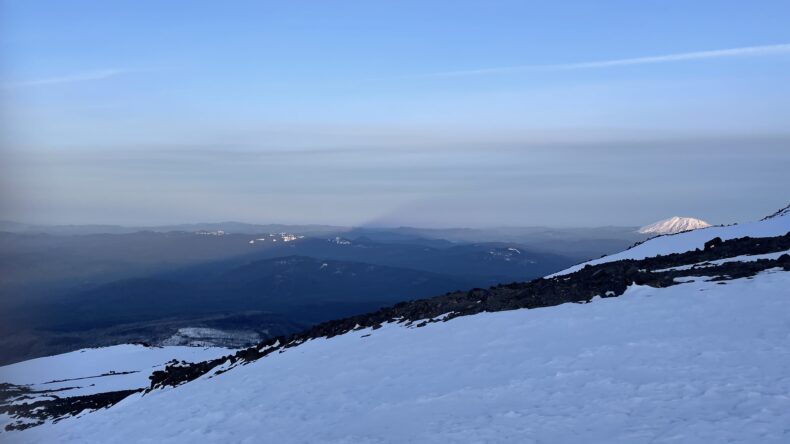
Growing up in northwest Oregon, with grandparents who lived in Portland, I spent a fair amount of time in the Columbia River Gorge, where Hood, St. Helens, and Adams preside as a kind of volcanic triumvirate. When I was a kid in the early 1980s, Hood was famous for being the highest point in Oregon, St. Helens was famous for obvious reasons, and Adams was, well, just kind of there.
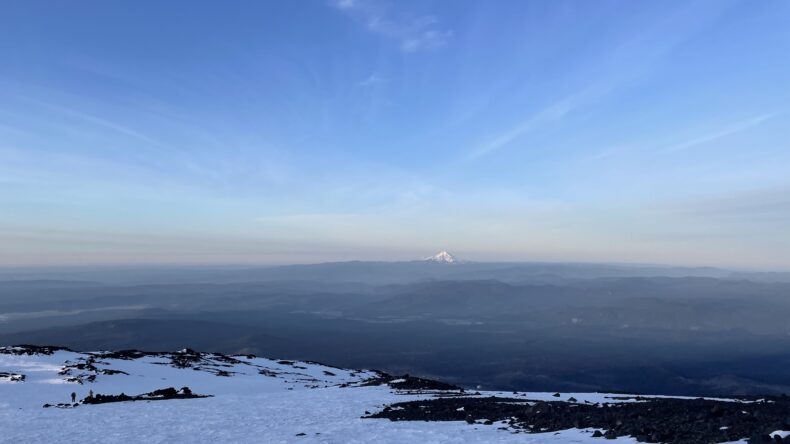
The first real place out of Portland to cross the river and reach the Mount Adams Wilderness is an old steel truss bridge called the Bridge of the Gods. That name is drawn from an old story told by area Native peoples. I read a gloss of it at some point on a placard near the bridge. There are, of course, many versions of the story, depending on who is doing the telling, but in my dim memory, the gloss told of two brothers, Wy’east (Hood) and Pahto, or Klickitat (Adams), who were competing for the hand of Loowit (St. Helens), the most beautiful of the mountains. At the time a land bridge spanned the river, and Wy’east would cross it to woo Loowit. When Pahto learned of Wy’east’s clandestine excursions, the two fought with fiery, destructive consequences. Annoyed, the Great Spirit destroyed the land bridge, and for good measure smacked Pahto on the head, depriving him of his once majestic peak.
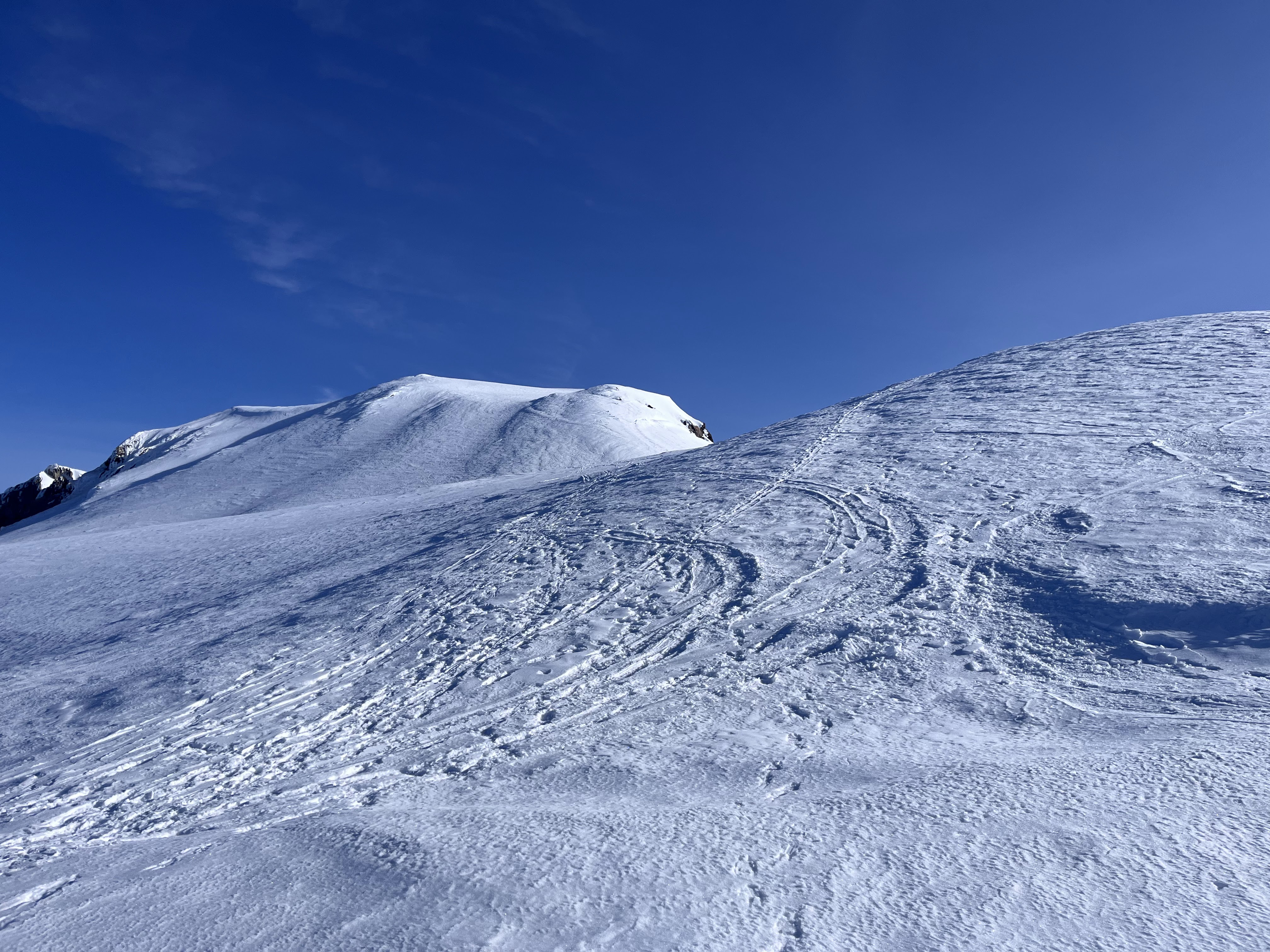
Pahto, with cognates in several Native language families, is from the Yakama Nation, whose reservation encompasses the mountain’s eastern flanks. It means high up, or high sloping mountain. Klickitat is from the eponymous peoples who live north of Columbia River. It means beyond.
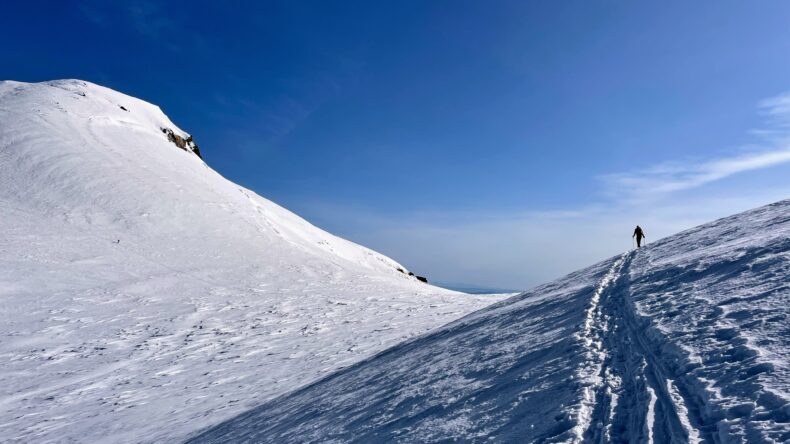
Anyway, the climb. We went up the South Spur route, which is the most basic and non-technical. (I am no seeker of gratuitous difficulty.) We started dark and early, since the road to the trailhead was still snow-blocked, adding another couple of miles or so and several hundred feet of elevation to what already promised to be a long day. No need to belabor: the climb was a slog. Up first through the forest, or what was left of it after a huge fire last summer. Up past tree line. Up to the Lunch Counter, where folks can camp if they want to break the climb into two days. Up to the false summit, called Pikers Peak. (“You are a piker if you stop on this summit,” reads an inscription carved into a boulder that I have never seen. “Don’t crab. The mountain was here first.”) From there a walk across an icy plain, and then up six hundred final feet to the summit itself. All the while, the other volcanoes attended in the distance.
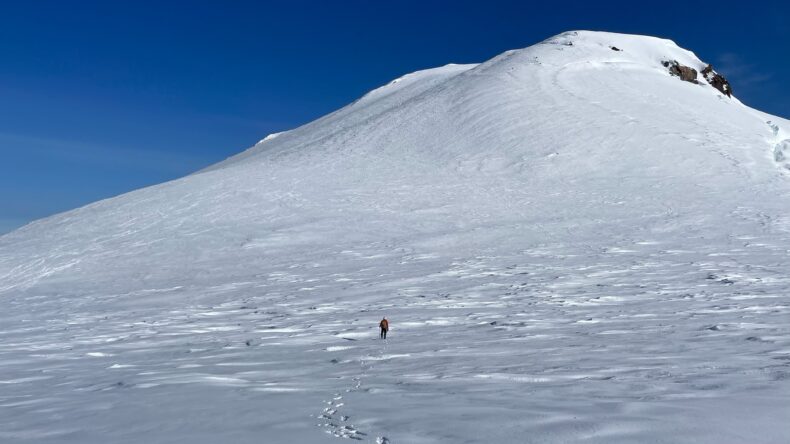
Carson and I reached the summit a little before 8 a.m. We were the only ones there, although a couple of other parties would arrive in about twenty minutes. We sat down on the hard snow under a brilliant blue sky, turned our backs to the wind, and looked out on the world that was, for the most part, far below us.

Whenever I am high on a Cascade volcano, I always think of a passage from “The Climb,” a poem by Gary Snyder in his collection, Danger on Peaks:
West Coast snowpeaks are too much! They are too far above the surrounding lands. There is a break between. They are in a different world. If you want to get a view of the world you live in, climb a little rocky mountain with a neat small peak. But the big snowpeaks pierce the realm of clouds and cranes, rest in the zone of five-colored banners and writhing crackling dragons in veils of ragged mist and frost-crystals, into a pure transparency of blue.
In this exalted state I tried to etch what I could of the moment into my memory, until the steady fresh breeze grew too cold. Also other climbers were arriving, and it seemed considerate to let them have the summit to themselves for a while. So we stood and, for a final few seconds, reveled in being, in a manner of speaking, the second-tallest people in all of Washington, before we started our descent.
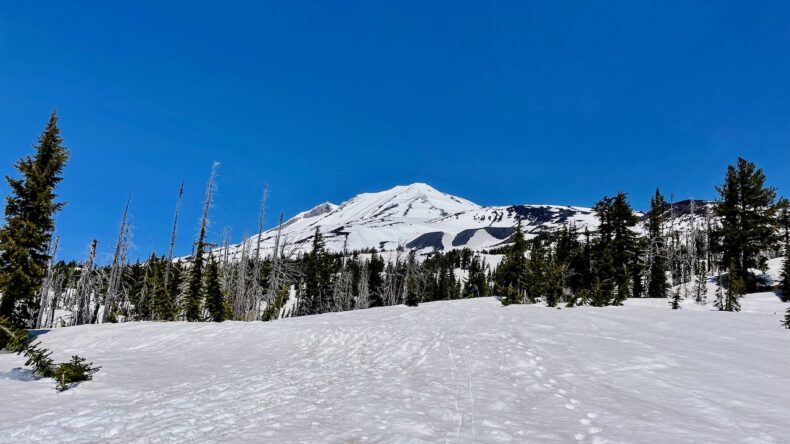
Photos by the author